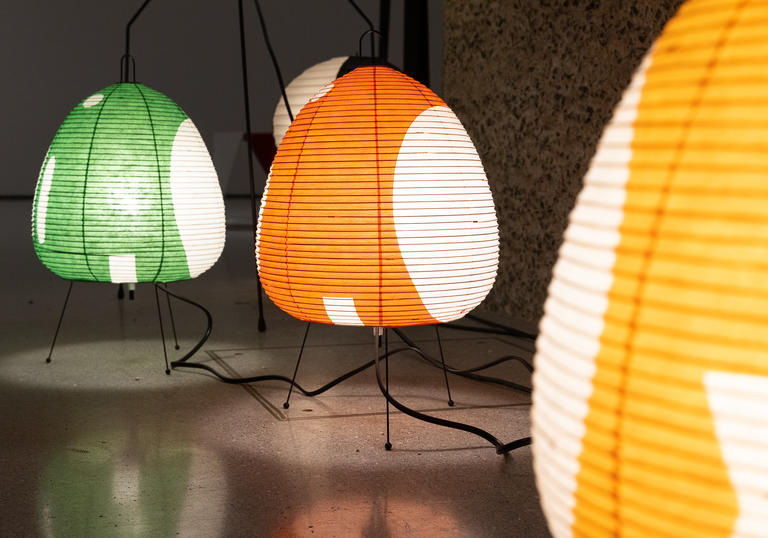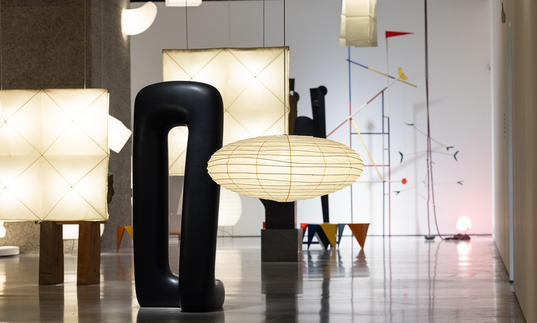‘All that you require to start a home are a room, a tatami, and Akari’ – Isamu Noguchi
In 1950 Noguchi returned to Japan for the first time in well over a decade. He was travelling on a Bollingen Foundation fellowship, studying the role of sculpture in the public sphere, visiting countries such as Greece, India and France.
The following summer he and architect Kenzo Tange were en route to Hiroshima to view progress on Tange’s Peace Park project when they stopped at Gifu, the centre of paper lantern manufacturing. There Noguchi saw the cormorant fishing festival, where the fishermen use paper lanterns, called chochin, to illuminate their boats at night. He was captivated.
‘The mayor of Gifu asked Noguchi if he would help revitalise the lantern-making industry,’ says Matt Kirsch, curator of research at The Noguchi Museum. ‘Not only had its economy suffered due to the Second World War, but before the war, the Japonisme movement in Europe and America saw a lot of knock-off paper lanterns which weren’t made in Japan.






